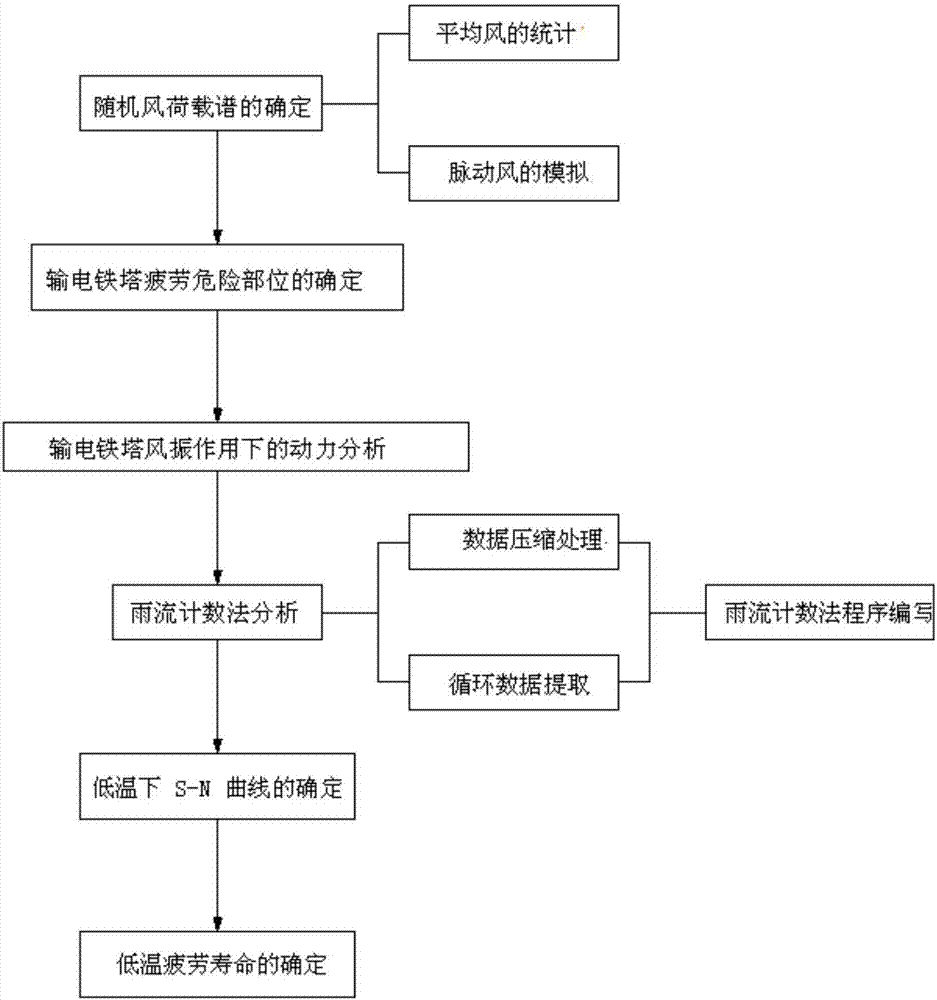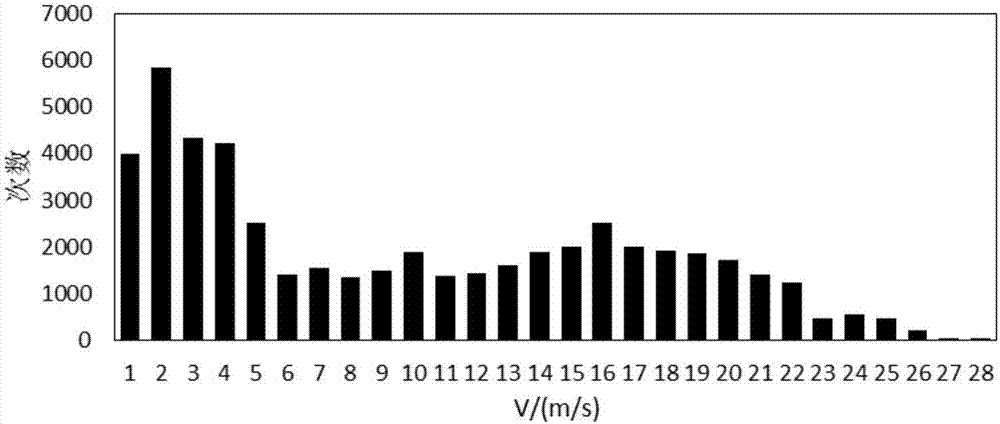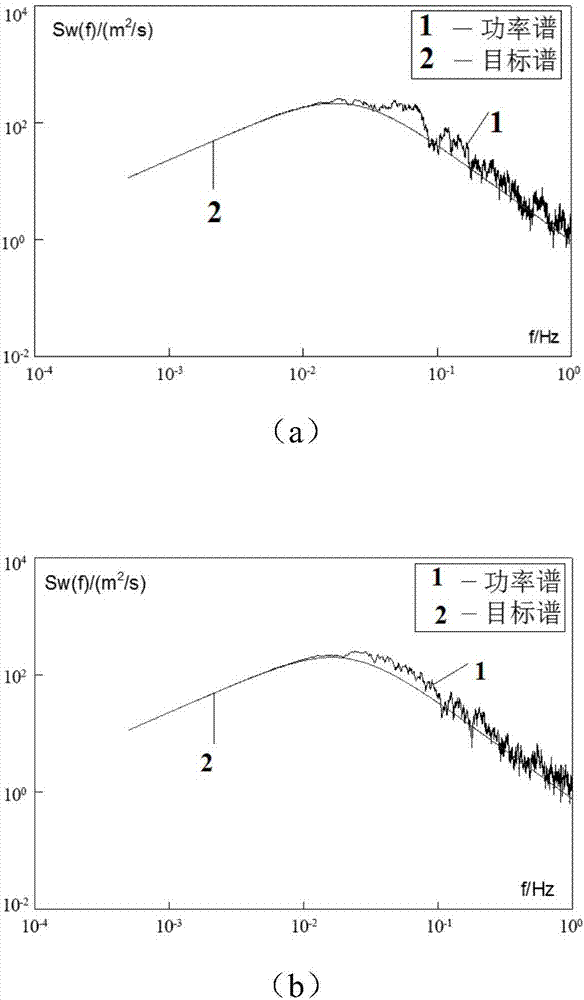Method of predicting fatigue life of power transmission tower in cold areas
A technology for fatigue life prediction and transmission towers, which is applied in electrical digital data processing, special data processing applications, instruments, etc., can solve the problems that the fatigue life prediction method of transmission towers has not been involved, and the research on fatigue life prediction of transmission towers is few. Achieve the effect of extensive promotion value, design rationality guarantee, and simple and easy method
- Summary
- Abstract
- Description
- Claims
- Application Information
AI Technical Summary
Problems solved by technology
Method used
Image
Examples
Embodiment Construction
[0046] The present invention will be further described in detail below in conjunction with the accompanying drawings and embodiments. This example is a 750kV line project in a certain area in Xinjiang, with a design wind speed of 31m / s (average maximum value of 10min once in 50 years at a height of 10m), icing of 5mm, and an extreme minimum temperature of -30.0°C.
[0047] Such as figure 1 As shown, the steps of the fatigue life prediction method for transmission towers in cold regions are: determination of random wind load spectrum → determination of fatigue risk parts of transmission towers → dynamic analysis of transmission towers under wind vibration → analysis of rainflow counting method → S-N curve at low temperature Determination → determination of low temperature fatigue life, the specific process is as follows:
[0048] 1) Determination of the random wind load spectrum: Statistically and simulated the average wind and fluctuating wind in the cold area respectively,...
PUM
 Login to View More
Login to View More Abstract
Description
Claims
Application Information
 Login to View More
Login to View More - R&D
- Intellectual Property
- Life Sciences
- Materials
- Tech Scout
- Unparalleled Data Quality
- Higher Quality Content
- 60% Fewer Hallucinations
Browse by: Latest US Patents, China's latest patents, Technical Efficacy Thesaurus, Application Domain, Technology Topic, Popular Technical Reports.
© 2025 PatSnap. All rights reserved.Legal|Privacy policy|Modern Slavery Act Transparency Statement|Sitemap|About US| Contact US: help@patsnap.com



